(Kashmir Rechords Exclusive)
To understand the roots of the insurgency in Kashmir, one must look beyond the widely held belief that the rigging of the 1987 elections was the primary catalyst. A critical event four years earlier, on October 13, 1983, serves as a stark reminder of the region’s escalating tensions—marked by the first international One Day Cricket match held in Srinagar.
The years 1982 and 1983 remain pivotal in Kashmir’s history. At the helm was Dr Farooq Abdullah, who, despite being a newly elected Chief Minister, misjudged or perhaps allowed the shifting sentiments of the Kashmiri people. This miscalculation would culminate in chaos during the cricket match, which was organized by the Indian Cricket Board to showcase India against the West Indies at the Sheri-Kashmir International Cricket Stadium. The venue was far from traditional; wooden planks formed makeshift stands, and the picturesque outfield was short enough to witness an overwhelming display of sixes from the West Indies batsmen.
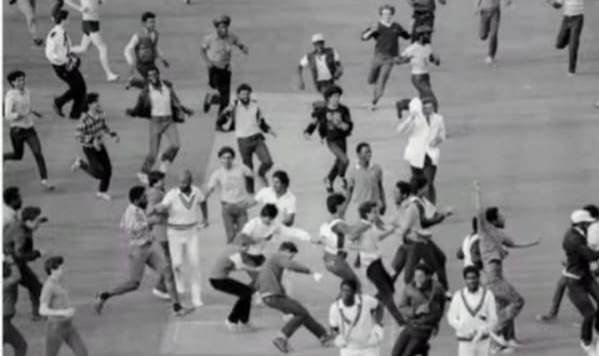
When Farooq Abdullah courted Controversy
Kashmiris had a deep admiration for cricket, especially for icons like Sunil Gavaskar, whose actions on the field in praise of Imran Khan poster shown to him, received an electrifying welcome. However, the jubilant atmosphere quickly soured. As the match progressed, the crowd’s behavior shifted ominously. Booing erupted, and a section of the spectators began to chant pro-Pakistan slogans. Even the weather seemed to mirror the tumultuous mood, as dark clouds loomed overhead, signaling the chaos to come.
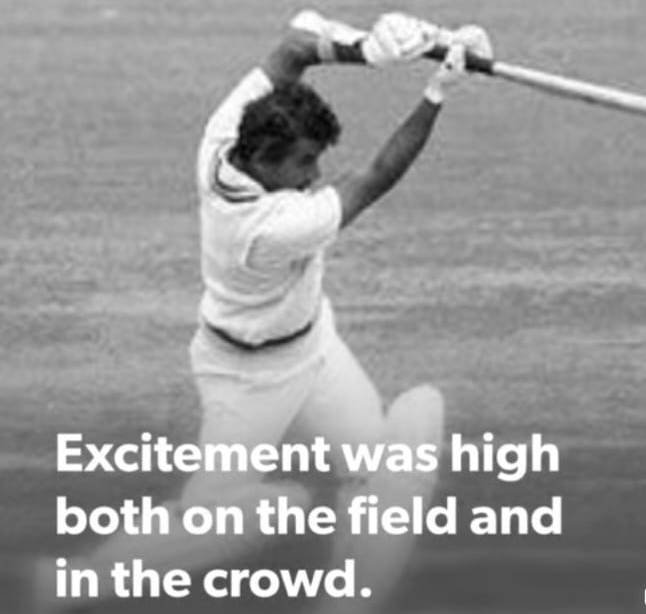
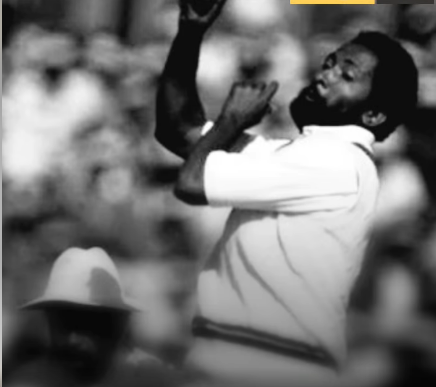
Farooq Abdullah witnessed the disruption but failed to take decisive action, a choice that would later haunt him. Prime Minister Indira Gandhi, alarmed by the unrest, began to perceive the emergence of secessionist sentiments in Kashmir. Within months, Abdullah’s government was dismissed, paving the way for his brother-in-law, Ghulam Mohammad Shah, to assume power.
The match on October 13, 1983, ended in controversy when twelve individuals were accused of vandalizing the pitch during the lunch break. This act of defiance, perceived as an affront to Indian sovereignty, set a precedent for the political unrest that would follow. Astonishingly, in 2011—28 years later—all those charged were acquitted due to a lack of evidence, despite the match being broadcast live!
Pitch Digging–Lack of Evidence!
Many who participated in the pitch-digging incident later became involved in the insurgency against India. Among them was Showkat Bakshi, a key militant whose digging charges were dismissed alongside others. Ironically, while Bakshi faced jail time in 1990 for terrorism, he never appeared in court for the cricket pitch damage, a stark reflection of the complexities surrounding justice in the region.
As the 1986 match against Australia approached, the political climate had worsened. This second and last ODI in Kashmir occurred under President’s Rule and also ended in disappointment for the Indian team.
Indian Cricket Controversies
Gavaskar, reflecting on the experience in his book “Runs ‘n Ruins,” noted the bizarre atmosphere where the crowd was more aligned with their rivals than their own team.
The events of October 13, 1983, reverberated through the years, symbolizing the deepening divide in Kashmir. The stadium that day became a stage not just for cricket but for the expression of dissent against Indian rule. Crowds hurled bottles and stones, creating an environment fraught with hostility. K.R. Wadhwaney, a prominent sports journalist, criticized the Board of Control for Cricket in India for their poor foresight in choosing Srinagar as a venue, suggesting that they ignored the potential ramifications of such a decision.
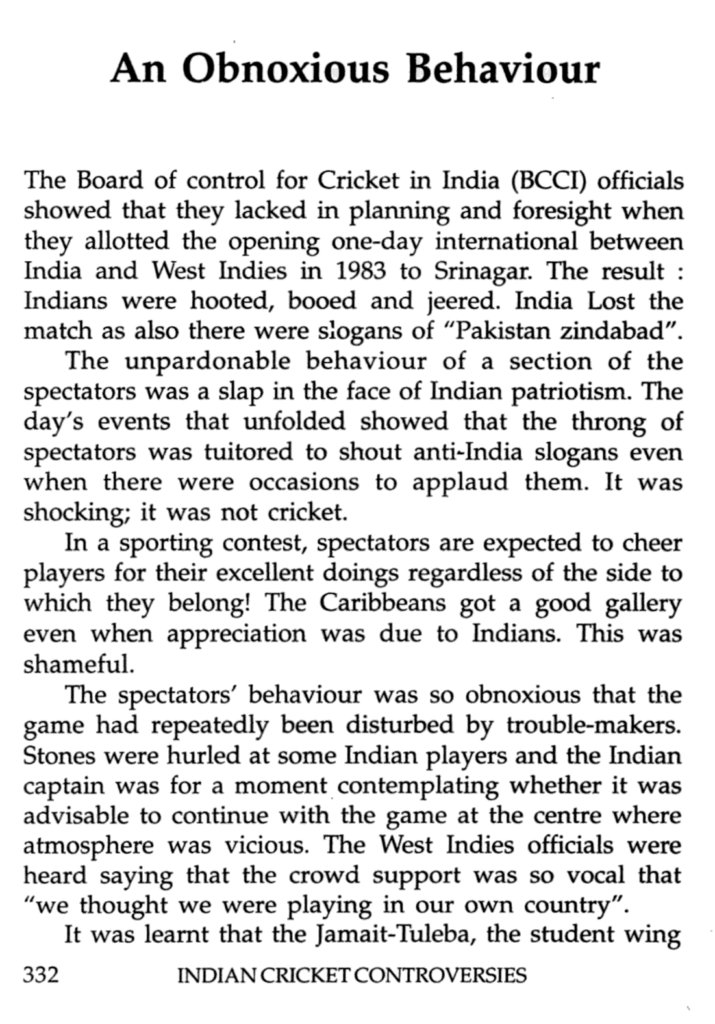
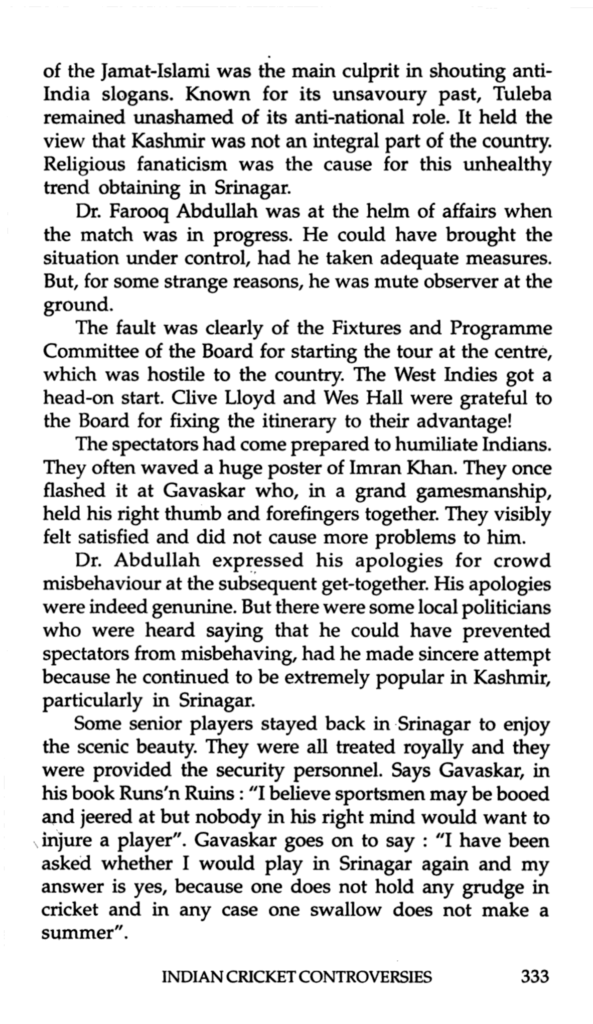
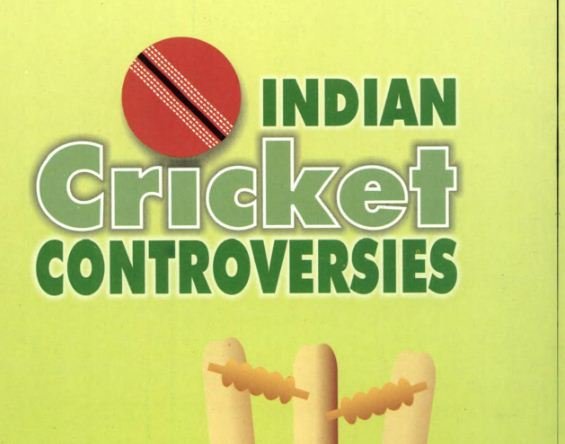
In his book “ Indian Cricket Controversies’’, Wadhwaney says that the unpardonable behavior of a section of the spectators was a slap in the face of Indian patriotism. The author further goes to state that the day’s events that unfolded showed that the throng of spectators was tutored to shout anti India slogans even when there were occasions to applaud them. It was shocking ;it was not cricket, Wadhwaney, who had covered the event notes in his book.
Are Sunny Days Back?
Today, Kashmir is experiencing a renaissance in cricket. Young cricketers from both Jammu and Kashmir regions are making names for themselves in national and international circuits, including the IPL. The region, now populated with a more educated and discerning youth, is eager to move forward.
Recently, the Legends League Cricket match reignited local enthusiasm, with spectators lining up for hours to secure tickets—a far cry from the tumultuous events of 1983. As Kashmir awaits a new era of sporting triumphs, the past serves as a reminder of the complex interplay between sport, politics, and identity in the region. With renewed hope, the cricket stadium in Jammu looks forward to hosting matches once again, signaling a brighter future for the beloved “Gentleman’s’’ game in Kashmir.

